The family was reunited after I got back from France. My world had fallen apart after my studentexamen, but it seemed to re-become a more or less sheltered existence. Arne had for many years been the man of sanity that you could depend on. Well, apart from that one year after my graduation when he was overwhelmed by his own problems — doing his unpaid student teaching in Stockholm — and Mother’s as well of course. But now some sort of stability was returning in my life.
My stepfather was now going to teach in my old school in Malmö once again, but Mother was in the hospital for psychiatric treatment. After giving up on her career as a photographer, she was no more the prima donna, it seemed as if she simply gave up on living. Mother had become used to being the star, and when she ceased to be one, the light went out.
There had been no better solution to our family problems. We had been separated by circumstances that nobody could have prevented and now that we were back in our beloved home in Malmö, it was so incredibly sad that Mother could not share our relief and happiness She had once been the most wonderful mother, the kind of mother children dream of having. I loved her. I was proud of her. But she broke from the weight of some unseen burden.
__________________
Who destroyed her the beautiful butterfly
she was to have been
a twirling fairy
in a beam of light
she was to have been
she was to have been
a golden warm fire
She was sailing up high
Who made her burn her wings on the sun
when she fluttered and fell
until she folded her wings
and never sailed any more
___________________
We spent the summer together in Småland close to an uncle’s place, renting for next to nothing a primitive old house that had a wood-burning stove and no refrigerator. However, Mother cooked delicious food on that stove and she seemed to have got back some of her once amazing energy.
For cold storage there was an outside cellar ten to twenty meters from the house that you got into by walking down some steps into a dug-out in the ground. It was primitive but it worked. An aunt of sorts, named Ellen, drove us to the closest town for us to buy the most essential tools we needed for cooking and eating. Arne and Mother never had a car, except the Fiat Balilla Mother had before the war – and they had never felt the need for one. We walked or biked like everybody else for short distances.
Trains – and streetcars and buses inside the cities – worked fine. I think my uncle lent us some bedding and a table and chairs for eating and that was as much as we needed for a summer with my uncle’s house close by.
Much later, after Arne had inherited a goodly sum of money from a very old aunt, via his mother, he asked me if I thought he should buy a car. Arne didn’t have a driver’s license and since he was just about the most absent-minded person I have ever known, I pointed out to him that in order to drive a car you have to know all the time what is going on not just in front of you but on the sides and behind you as well. He realized that it was not for him and he bought a sailboat instead.
Arne had always liked sailing from his childhood summers in Bohuslän. In Malmö we had had two different secondhand sailboats, a fairly big one after a small one. Sailboats were made of wood in those days. His style of sailing was very different from what I got used to on Long Island Sound later on. It was not with water coming in over the lee gunwale and the salty spray on your face. And besides, there were very rarely strong winds in Öresund. But the wind was filling the sails, and it was pleasant sailing among islands — the Danish islands in those long gone days, or, later on, the archipelago off the coast south of Stockholm or Nyköping.
__________________
One time when John and I visited Arne in Nyköping and Stockholm, the same year we went with him to Drottningholm Theater in fact, 1974, we also went out sailing with him in the archipelago off the coast of Nyköping. It was a quiet sailing trip, but very pleasant in the beautiful Baltic archipelago, that is much greener than Bohuslän on the west coast with its barren islands. Arne left the tiller to me and that was of course the very best part. I was missing my little Rhodes 19, called Kijé (I love Prokofiev), which I had to leave behind in New Rochelle when we moved to Paris.
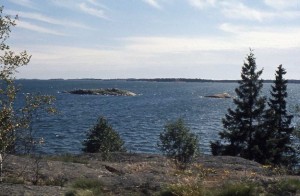
View over the Baltic Sea from the little rocky island where we were picnicking. Seal island in the background.
We stopped on an island for a picnic and we were quite thrilled to see a little island to the north, really just a rock emerging out of the Baltic, covered with seals. Certainly not like the huge sea-lions you see cavorting on the little islands off Point Lobos south of Monterey in California, but a nice touch of life that you don’t see so often. You don’t have to go to Scotland to see seals. It wasn’t a big deal but for us city lobbers who love nature in all its forms, it added a little thrill to the day in the archipelago.
_________________
After we came back from our gypsy-like vacation in Småland our beautiful apartment was now the home for just Arne and me. Gun was now definitively established in Lund as a medical student then and already included into Per’s family. And that meant for the rest of her life since she was always attached to the university.
For my first term at the University of Lund I took the train back and forth between Malmö and Lund, a very short distance, and I did what lots of other students from Malmö did, instead of renting a room in Lund. Living at home gave me many advantages. First of all, I had missed having my own home and I had particularly missed Arne very much. We were now back together, the good buddies that we had always been. Also I now saved quite a bit of money from my study loan on rent and food and that would come in handy for my next summer vacation, which was going to be back to France and Gaëtane.
Arne got to be interested in cooking and I followed along. We had fun cooking and eating special treats, and we shared the work fairly. We specialized in European delicacies that Americans would not touch back then. But the French are also very fond of that kind of food. I had not really learned to become a proficient cook in Luxeuil, just to cook certain dishes that were not very often served in Sweden when I was very young, such as Sauerkraut, escalopes de veau, real pommes frites (cooked twice in a bain d’huile), blanquette de veau, as already mentioned, a more complicated dish that I never cooked with Arne. And of course there were various simple things like bifteck. I had also, most importantly, learned to make a sauce béchamel (white sauce) and a good salad dressing, which have both served me wonderfully well ever since.
I still cook blanquette de veau today, a lifetime later, and by a funny coincidence that was actually a mistake, I had given the recipe in Le nouveau livre de cuisine by Blanche Caramel a twist that I will never give up on.
(Long parenthesis — The summer I was staying with Ken and Gwenda in Babraham, England, Ken went to a book auction where the books were auctioned off by the meter. He came back with a pile of books, and, going through them he found three that would suit me better than it suited them. “Boswell’s Life of Samuel Johnson” they already had, Dickens’ “Christlmas Carol ” they also had already. Then there was a cookbook in French. Guess what! It was the very cookbook I had used in Luxeuil-les-Bains. It also went to me of course. I still have all those three books. But I must confess that I never read Boswell’s Life. Dickens’ “Christmas Carol” though, is probably one of the most read books in English. I read it. Bah humbug.)
The recipe said a bouquet garni should be put in the bouillon. I asked Ulla what that was and she suggested I get it at the épicerie fine in the main street. So off I went and found that they were not sure of what it was either. They said thyme, parsley, bay leaves and tarragon, they thought. Okay, I got that and everybody seemed to be pleased with my blanquette. It turns out that tarragon is not really part of a bouquet garni and so I had mistakenly added an herb that wasn’t supposed to be used according to the standard recipe. I still today put tarragon in my bouillon when I cook a blanquette de veau.
_______________
Arne’s and my culinary experiments had started in the fall of 1953, my first term at the university. Mother, sadly, was in a clinic after a breakdown. Arne and I quite often enjoyed preparing gourmet meals. Veal kidneys and sweetbreads were some of our favorite experiments. Calf’s liver was a more everyday delicacy. Oh yes, and Wienerschnitzel, veal cutlets first dipped in egg and then turned over in bread crumbs, sautéd then served with a slice of lemon, an anchovy in a circle on top of it and a few capers in the circle – delicious if cooked right.
We invited Arne’s very best friend from his youth, Curt, an army officer who was at the time the commander of Ystad regiment, a colonel then. He was to go very far.
Once he was invited for dinner with his family, wife Eva and their two sons who were just a couple of years younger than I was. I don’t remember what Arne and I had cooked up that time, but it was a very pleasant evening. A couple of more times Curt came over alone — Ystad being just some 60 kilometers from Malmö — and I remember at least one of those evenings well. Curt was a true charmer and when he laughed with his eyes sparkling from sheer joy he was irresistible. One Wienerschnitzel evening stands out in my memory.
Arne and he had been close friends ever since high school, Nya Elementar skolan in Stockholm, and they now went over old memories. I can still see handsome Curt laughing heartily and contagiously. I remember Arne standing on my right, talking, with a glass in his hand, Curt sitting on Mother’s wide divan that our sub-letters had moved into our big living room (to make Mother’s room into a dining room). It will forever stay etched in my mind how Curt was leaning backwards on Mother’s divan, having a fit of the happiest laughter I had ever heard. I was smitten. There were no sorrows in the world. Alas, things were soon going to change. And there was certainly a reason why Eva and the boys had not joined Curt for this dinner.
It was not until decades later when I to understood that Curt was in love with me. UN coup de foudre, clearly.
________________
I saw Curt again around 1960 when I was married to Roland, the air-force officer. Tante Gerda had invited Curt, who was now a major general and me and Roland. but I don’t quite remember who else was there, at this petite soirée.
Tante Gerda had made sure that Curt and I sat together on her Louis XVI sofa, What were we talking about? I have no idea. But I know I talked to no one else that evening. And there were no embarrassing silences.
Roland was of course present at this soirée, but as I remember I was talking to Curt and did not even think of where Roland was sitting and what he was doing. Was Arne there? I can’t remember, but I don’t think so. Tante Gerda of course had to invite Roland for this occasion, since he was my husband, but the more I think of it the more it seems clear to me that she had been planning on getting Curt and me together.
However, even if Curt had been enamored that afternoon, the soirée was somewhat formal, and he would have found it difficult to look at me the way he did 25 years later at Arne’s funeral when we seemed to be in some way isolated from the rest of the world.
So had Tante Gerda been scheming to make Curt and me sit and talk together on her Louis XVI sofa? She definitely thought my marriage to Roland was a disaster. Yes, I certainly believe that was Tante Gerda’s intention.
As it happened, I left Roland a year or so later, and I would have been free to marry Curt soon afterwards. I certainly believe that Curt kept informed via Arne about my divorce and my whereabouts.
I was 27 when I finally decided that the kind of life I was living with Roland could not last. I had married Roland to get some security in my torn and rootless life, to belong somewhere. But I had not bargained for a totally lackluster life. There was just nothing of any interest in that life — except for the Swedish books I devoured, after reading only French and English books during the years at the university.
I had wrongly assumed that Roland would give me a comfortable life. It got to be nothing like that at all. Comfort, security and a real home that felt like my home. There was nothing of that.
Some time later I happened to see a passport photo of me from the time I was married to Roland. I was actually quite beautiful, a word I would never have thought of applying to myself at that time or at any time later.
The year after I left Roland I did my one-semester student teaching at a lycée in Stockholm, and I got hired to teach in the same school for the spring semester. I was living that year on Riddargatan on Östermalm, and Curt might have thought of taking an initiative that I would happily have welcomed. Even since the days in Malmö when he came over for dinner from Ystad, I had been smitten by his youthful appearance and his charm. There was clearly some important thing that kept Curt from getting in touch with me via Arne. And I don’t think it was the difference in our ages. What is age after all?
Now, instead of getting into a safe haven where I would have loved to be, I set out on a path that took me to many ups and downs, a hard life. After all the insecurity in my youth, which was the reason why I married Roland at all, I would have loved to marry a man that I think I was actually in love with. And he would have offered me a life I would have felt comfortable in.
I set out on a course in my life that took me through many shifting highs and lows. I did however end up in a happy marriage with John in the early seventies, in a beautiful house and with three wonderful animals, two cats and a dog, who run around so very happily in our pleasant yard. And life is anything but boring. There is lots of music, reading and writing and there has been a lot of theater and opera in various countries. There have been innumerable travels all over the world.
But I can not help thinking of a parallel universe. However, there was Curt’s son Christer who had a break-down after he failed to be admitted into the very prestigious Stockholm Institute of Technology. His mother, Eva, blamed Curt for Christer’s breakdown.
Curt had at this time been divorced for many years and his entire life had turned into a theme in minor. I had never forgotten Curt since those happy days in Malmö when Christer was a seemingly happy youth of 17. How I would have loved to be able to support the two of them, help Curt care for his son.
However, life would take me on a different course. I became the “Wandering Swede”.
_______________
Back to Arne now and his new life after the theater.
Arne was a born teacher and my interest in history, which has only increased with years, was no doubt grounded in Arne’s stories and from the history books he passed me from his bookshelves about subjects I wanted to know more about. But, above all, my great interest in the theater I owe entirely from Arne. It was, however, also revived when I worked so hard for three years on Mother’s wonderful photos. (Theater pictures by Magda Molin )
One day Arne and I took the ferry to Copenhagen and lived it up. I don’t remember what reason we had for going, if any, except that Arne invited me to the quite new and expensive restaurant, called “Sy små hjem” — Seven little homes. They have indeed seven very different rooms and you pick the style that pleases you the best. We had filet mignon with sauce béarnaise, which I remember because I had never had tournedos, (as we call it in Sweden) with sauce béarnaise before. It was all very good, and festive, but John and I have since decided that Sy små hjem is not worth the price you pay. It’s strictly for tourists.
But I enjoyed immensely being spoiled by Arne who is very rarely a big spender. We just walked around looking at nice places in Copenhagen having a nice time. Arne has always been a formidable walker, just not in the Swedish mountains where he felt like a fish out of water. I remember in later years walking around Paris with him on one of his numerous visits during the thirteen years John and I lived there. I was barely capable of keeping up with him. I like to walk, but big cities can be very tiring. Arne wanted to take me to lunch in a really nice restaurant but we had a lot of trouble finding one. We were in the area south of the Opera when we finally had to settle for a place that wasn’t quite what Arne had in mind, but we had a good lunch anyway.
Arne and Mother moved to a much smaller city called Nyköping at the end of the school year 1953-54. I helped them move even though I didn’t do much to help, just really keeping them company. Arne wanted to be close to Stockholm so he could go to the theaters and the opera regularly. He wrote theater reviews for the local paper (Sörmlands Nyheter) and that way his expenses were paid for. I read some of them and they were probably just about the best theater reviews I have ever read. He knew theater so thoroughly that he would start out by giving the background to the play. I felt awed by both his style of writing and his knowledge.
Arne also knew the cultural director of the Swedish radio very well and this man, Claes Hoogland, arranged for him to give two radio lectures for Swedish radio. The first one was about “French theater after the Revolution” and, later, one about Sarah Bernard, which was wonderful. He gave me the tapes of both lectures, which we had transferred to audio cassettes since old-fashioned tape recorders were disappearing. Later we’ve had them transferred to CDs. The lecture about Sarah Bernard who was unique in the history of the theater, the little woman with the most amazing stage presence imaginable, ended with a recording of her own voice, which was a stroke of genius. The excerpt is from L’Aiglon by Edmond Rostand, a play about the son of Napoleon 1st, who was also called King of Rome.
Also, added to this was the amazing fact that Claes Hoogland had managed to persuade the old man Sven Jerring (1895 – 1979), Sweden’s very first radio announcer, to do the introduction of the program. Sven Jerring, when I was a child, was Swedsih radio. This made the whole lecture a piece of history on Swedish radio. I could hardly believe it, but Claes Hoogland who was an old childhood friend of Arne’s, even though younger, had a lot of influence in the cultural life in Sweden. And so he proposed the big deal and Sven Jerring accepted – which seems to me an absolute miracle. Sven Jerring whose “‘Children’s mailbox’ we had listened to, and never missed, every Thursday afternoon at 5, the man who was the Swedish radio way back in the very old days, was still willing to do the introduction in the 70s when Arne was working on his radio lecture.
On the French stage, at least at the Comédie française, it has always been a tradition to precede the opening of a play by three strokes on the floor of the stage with a heavy wooden stick called le brigadier. It’s ‘les trois coups’ and it is magic. Sarah Bernard had to get a leg amputated as a result of a wound in her right leg, and so she had been absent from the stage for a long time. She came back though, courageous to the very end. On her first performance after her long absence, the audience was anxiously waiting to find out how she was going to make her entrance with a wooden leg. The tension was growing. Finally les trois coups sounded and the voice of a very nasty theater critic was heard over the whole theater – ‘Tiens, la voilà!’.
Professor Agne Beijer and Drottningholm Theater
One day I happened to put my hand on a little book in my Swedish bookcase that turned out to be Arne’s booklet about Professor Agne Beijer (1888 – 1975) and his enormous work to give new life to the old Drottningholm theater (Drottningholms Slottsteater). The booklet was published in 1982 by and for “Föreningen Drottningholmsteaterns Vänner” . 1 The theater dates from the 18th century and the time of Gustav III, Arne’s favorite king, the theater king. This ancient theater had been forgotten by everybody, except by Agne Beijer after his first visit as an envoyé from Kungliga Biblioteket in search of a painting.
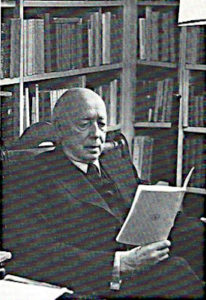
Agne Beijer, Professor in Theater history, the first one ever in Sweden (Copyright “Föreningen Drottningholmsteaterns vänner”)
The story begins when, one late winter day in 1921, Agne Beijer more or less by coincidence visited what was then a storage place for Drottningholms museum in the old theater building. He was there mainly to look for a famous painting which was rumored to be stored there. He and the other two men, who had been sent there from the Royal Library (Kungliga Biiblioteket) found the precious painting. However, in passing through wide rooms and narrow passageways the men also found, hidden under dust a meter thick, strange objects, which later turned out to be stage sets (des coulisses), stage machinery and props. Agne Beijer was all set on getting this treasure restored for cultural history. The outcome of this amazing discovery and Agne Beijer’s immediate insight and his work on getting the theater restored, was that Sweden now has a world-famous theater museum, in many ways the richest theater museum in existence in the world.
And that is where my stepfather, Arne Lydén, comes in. Arne had studied the history of theater with Agne Beijer and admired him immensely, the man himself and his great knowledge in the various aspects of the history of theater. Agne Beijer was the first Swedish professor of teaterhistoria.
He also managed to revive the theater and to make it, once again, an opera stage for the public. Copies were actually made of all the stage sets and machinery, so that the restored originals would not risk being damaged.
Arne was a student of Agne Beijer’s at what was then called Stockholms Högskola (later Stockholm University) and the two theater men became great friends. Arne became his assistant and he was very involved in the restoration of the theater museum and had ideas for how to make money to keep the work going when money was short. Because of the harsh times during World War II and the foreign audience drying up, Arne suggested that they open up the theater for associations and various educational groups. It worked and the theater’s finances were saved.
Arne spent a great amount of work to produce this enormously well written and well documented booklet. He gave Agne Beijer the great attention that he definitely deserved. Once in the early 80s when Arne was still well enough to travel to Paris to see us, John and me, he said “I have now proofread Agne’s book a third (or maybe fourth) time. Now I can die.” (He had very nearly died a year earlier in Helsinki from a serious heart attack.) He lived quite a few more years after saying those words, but in 1986 he became seriously ill. His heart was giving up. I went to Sweden, Landskrone, which city Arne had moved to for company, something that was essential to Arne. I hugged him and he could barely form the words “Du är snäll du.” (You are a good person.) I will always remember those words. He died a few days after that.
But going back in history I remember well the wonderful day (probably in 1950) when Arne took me and my sister Gun on a tour behind the stage of Drottningnolmsteatern. He was very proud, and understandably so, by the fact that he had worked there with “Agne” (as he called him) as they dragged out old stage sets and sorted the dusty piles in the back-stage areas. Arne was born in 1907, so obviously he got into the huge project quite late in the story of sorting and getting the valuable objects cleaned up and catalogued. It would have been in the thirties that he became a close friend of Agne Beijer and also studied and passed the final exam in ‘Teaterhistoria’ with his friend and mentor.
Arne showed us the movable rough-sea-water back-stage machine, the wind machine that Queen Elizabeth of England was shown a few years later on her visit with Prince Phillip, and generally what there was to be seen in this historic theater. Our king, Gustaf VI Adolf, was there of course, and there is a photo of the three in Arne’s extraordinary little booklet.
My sister and I were rightfully awed when we understood the work that had taken place and the extraordinary discovery made by Agne Beijer on his first visit, with two other young men from Kungliga Biblioteket, in search of a painting. Agne Beijer found so much more than the painting. At the time, he could only guess what those huge objects were that were sticking out into the passages where they were walking.
History was taking place.
__________________
When John and I were in Stockholm in 1974 , Arne invited us to see a Händel opera at the Drottnigholm theater. The three of us took the boat to Drottningholms Slott (palace) from its mooring place at the City Hall (Stadshuset).
There was a drizzle in the air and heavy black clouds in the west and the north. We were moving west on Lake Mälaren past large and small green and rocky islands, and there was a sudden shower. But as we got closer to Drottningholm, the rain ceased.
As I looked back a bit to the northeast, there were heavy grey clouds over an island that we had just passed by, and at the same time the sun was coming through in the west, over the palace. It was a magic contrast of heavy drama behind us and sunny lightness over the grand old palace. It seemed like Nature’s own magnificent prelude to the historic event that was ahead of us.
We first walked around in the vast French gardens of this almost 300 year-old royal palace, we went all the way to the Chinese Pavilion (Kina slott) and were impressed by the resemblance to the gardens of le Château de Versailles.
The Händel opera was “Ottone” and it was magic sitting in this old theater listening to an opera, basically the same way it had been performed in the same place 200 years before. Arne must have been very much aware of having had an active hand in the renaissance of this fascinating theater.
The theater, which is not big at all, since it was to begin with just for the royal family and the court, sits right next to the palace, Drottingholms slott.
Inside, everything has of course been renovated but kept the same way it used to be. All the old lighting, wind and stormy sea effects were just the way they had been from the beginning of the theater. The 18th century-style sets made you feel as if you had gone back a couple of hundred years in history.
Way back in the late forties, Arne had given Gun and me a tour of the theater, behind the stage and all. It was fascinating seeing this 18th century theater and the old-fashioned props that were used for instance to give the impression of a stormy sea in the background. Very simple but the effect was quite convincing. And of course thunder, lightning and other special effects.
Today the original scenery and stage props are not used any more, but exact copies have been made that are used in their place. The original curtain was carefully repaired though and is still in use. In the middle of the front row are the seats for the king and the queen and for a few royal attendants, not in a balcony to the right of the stage the way it has always been in the Royal Dramatic theater and the Royal Opera. The velvet cloth on the royal seats in the front row has golden crowns spread over a blue background.
Arne was so anxious to finish this precious little book in memory of his mentor and friend, Agne Beijer, that when he was 75 and the book was finished he said “Now I can die because I’ve done the last proofreading of Agne’s book”. But I am repeating myself, since I am so very moved by Arne’s extraordinary contribution to the memory of professor Agne Beijer. I am so very impressed by Arne’s remarkable style of writing and his magnificent tribute to the memory of his great friend. Arne was indeed pleased to know how very much I appreciated his precious booklet.
Continued: Chapter 24 (Part 2) Stockholm and some history
- AGNE BEIJER — En minnesteckning — Av Arnbe Lydén Utgiven av Föreningen Drottningholmsteaterns Vänner (AGNE BEIJER — In memoriam — By Arne Lydén — Published by The Association ‘”Fiends of Drottningholm Theater” ↩


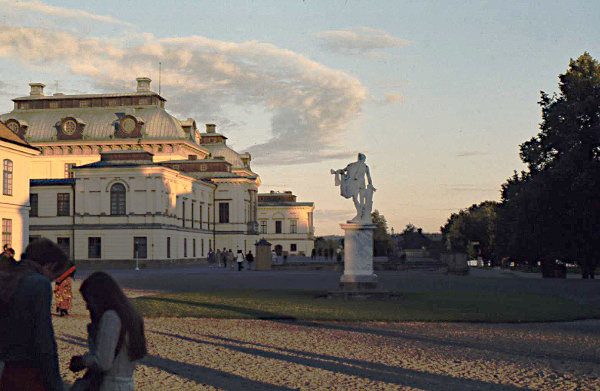
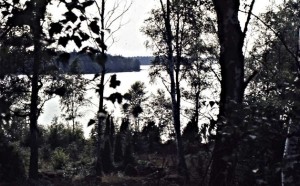

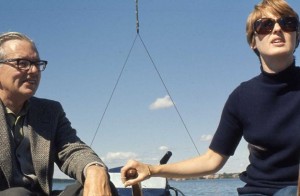

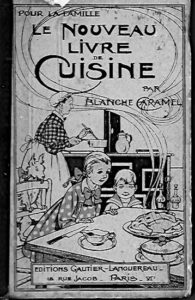
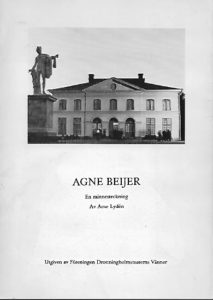
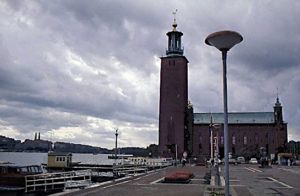
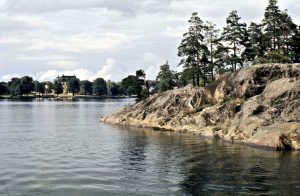
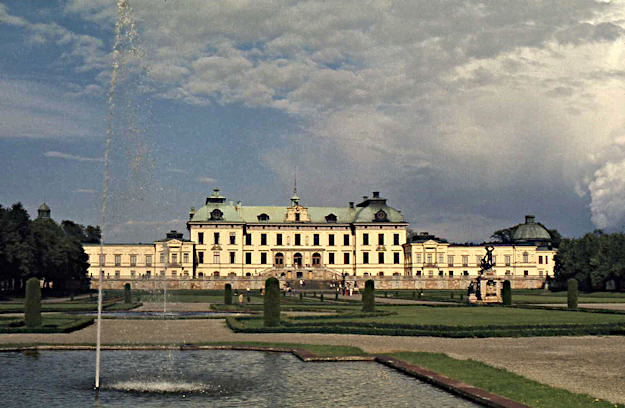
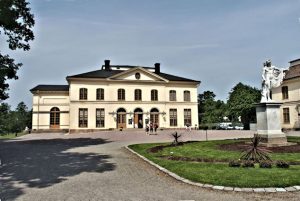









Restored: Original comment on 7 Dec 2012 at 14:08
The longer this blog becomes, the more obvious it is that there are so many more interesting stories ahead.
For a North American who’s been to Finland but not Scandinavia, it’s pleasing to see how easily Sweden comes to life through your keyboard.
Pingback: Sketches from the Life of a Wandering Swede | Siv’s sketches from her life